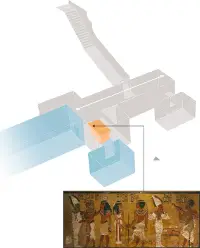|
Egypt: No Hidden Chambers in King Tut's Tomb
May 6, 2018
No one is hiding in King Tut's tomb. That's the conclusion of Egypt's Ministry of Antiquities after a series of intense radar scans of the burial chamber of the famed "Boy King," Tutankhamen, showed no hidden walls, as been the highly publicized claim of a British Egyptologist in 2015. Nicholas Reeves had, in that year, analyzed a group of high-definition laser scans and proposed the existence of an as-yet undiscovered chamber in Tutankhamen's tomb, which was discovered by Howard Carter's team in 1922 and opened the following year; further, Reeves, claimed that the hidden chamber contained the last resting place of Nefertiti, the most famous wife of Akhenaten, who was, according to relatively recent DNA analysis, the father of King Tut. In response to Reeves's claim, Japanese radar specialist Hirokatsu Watanabe conducted a series of ground-penetrating radar (GPR) scans and concluded that he could see chambers behind the north and west walls of the tomb. In 2016, a group of National Geographic engineers carried out another round of GPR scanning and found no hidden chambers. An Italian team, led by Francesco Porcelli of the Polytechnic University of Turin, carried out he latest GPR scans, which showed no manmade walls or anything else hidden. GPR has been used increasingly by archaeologists in recent years. Its most prevalent use in this area is to detect manmande "spaces," such as tombs and passages. The only to know for sure what's behind the walls of King Tut's tomb is to knock holes through them –a practice that most modern archaeologists would find anathema. |
Social Studies for Kids |
Social Studies for Kids
copyright 2002–2019
David White






